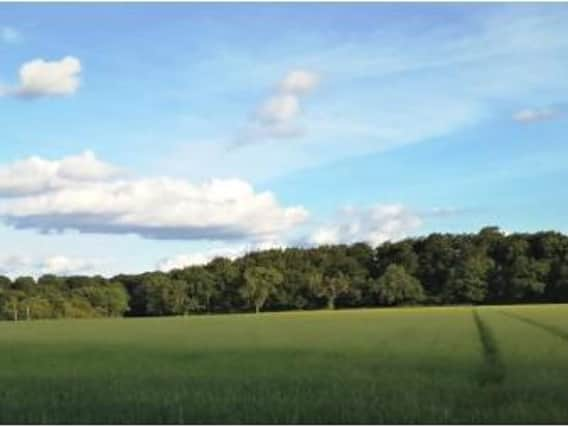Full extent of damage to Jones Hill Wood near Wendover laid bare as HS2 granted license by Natural England to begin work


HS2 will now begin tree felling at Jones Hill Wood despite huge local protests against the work.
The Work at Jones Hill Wood will see:
"The damage or destruction of up to four common pipistrelle resting places and one breeding site"
"1 Soprano Pipistrelle resting place"
"1 Barbastrelle resting place and one breeding site"
"1 Noctule resting place"
Advertisement
Hide AdAdvertisement
Hide Ad"2 brown long-earned bat resting places and one breeding site"
"1 Natterer's bat resting place"
The confirmed losses in the wood are
-19 trees with potential roosting features as part of the removal of 0.7 ha of ancient woodland
-one common pipistrelle roost
-alteration to conditions of trees with potential roost features in the retained areas of the wood
You can read the full extent of the damage being done to the Wood and Natural England's statement by clicking here.Dave Slater, from Natural England said: "Natural England’s role in licensing development is to ensure that activities affecting protected species are carried out without damaging those populations.
Advertisement
Hide AdAdvertisement
Hide Ad"We don’t have powers to stop projects that have been approved, or to delay them unnecessarily, nor do we have powers to prevent the felling of ancient woodland if it has been approved by the planning system.
"At Jones Hill Wood, we have undertaken a careful assessment of the impacts in this area and requested further hibernation surveys. Our assessment has concluded that the felling of 0.7 hectares of woodland at Jones Hill Wood will not be detrimental to the favourable conservation of the overall bat populations in this area.
"Our decision takes into account a number of elements including the areas over which bats forage and the wider available foraging resource, the proposed methodology for minimising harm to roosting bats, and the compensation measures that must be put in place, which include creating new roosting features, bat boxes and the planting of 3.2 hectares of woodland habitat and fruit trees on an adjacent site.
"The effect of these compensatory measures will be monitored over a period of many years.
Advertisement
Hide AdAdvertisement
Hide Ad"The licence also sets out measures that must be undertaken to ensure no bats are harmed during tree and vegetation clearance at the location. Some further details on impacts and compensation measures are included below.
"We’ll continue to work both with HS2 and other concerned stakeholders during the works, and our staff will undertake a site visit during felling to ensure that licence conditions are being met."
HS2 said that 'all of their ecology work is carried out in accordance with the law'.
An HS2 spokesperson said:
“HS2 take its legal obligations seriously, and all of our ecology work is carried out in accordance with the law. Licenses from Natural England ensure that we have the right safeguarding in place to protect wildlife species, including bats.
Advertisement
Hide AdAdvertisement
Hide Ad“In addition, an area of 4.1 hectares of woodland is being created near Jones Hill Wood, with 22,000 trees planted in the area including native species such as Rowan, Birch and Guelder-rose, helping to increase connectivity with nearby Rushmoor Wood.
"We have recently been undertaking a significant programme of tree planting in the Jones Hill Wood area. This planting is separate to the ancient woodland soils transfer area. The site for the tree planting works is located between Bowood Lane and Kings Lane. 22,000 trees have already been planted, including native species such as Rowan, Birch and Guelder-rose.
"An area of approximately 4.1ha of woodland planting to compensate for the losses from Jones Hill Wood will be situated immediately east of the retained ancient woodland and soils translocation area. Its location provides a direct link with the unnamed wood 170m to the south-east and, in turn, this increases connectivity with Rushmoor Wood, the nearest area of ancient woodland in the district."
Protests have boiled over in recent months, with Thames Valley Police calling for witnesses to a incident of violent disorder where around 30 people attacked personnel from a HS2 construction site, injuring nine members of security staff and damaging property.
Advertisement
Hide AdAdvertisement
Hide AdYou can read about that here.However protesters at the site remain unconvinced by the ecological arguments of HS2 and Natural England.
"Squirrel", one of the protesters evicted from Jones Hill Wood in October stated, "After spending the last year working alongside activists, community members, and academics to
build a body of evidence and legal challenge to save Jones’ Hill Wood, we have once again been let down by Natural England and been shown how ineffective UK wildlife law is in the
face of an infrastructure project like HS2.
"Natural England themselves have recognised the significance of this habitat and area, but despite being created to protect the environment by law, they are issuing licences to kill.
"We have followed every avenue within the law, and yet again we are seeing HS2 being allowed to continue with inadequate surveys."
What do you think?
Get in touch at editorial@bucksherald.co.uk